Toppan Printing Manufacturing Partner
They have been binding the Hobonichi Techo Original and Hobonichi Techo Cousin since 2005. Their machines and constant improvement of assembly methods are what make the Hobonichi Techo so durable.
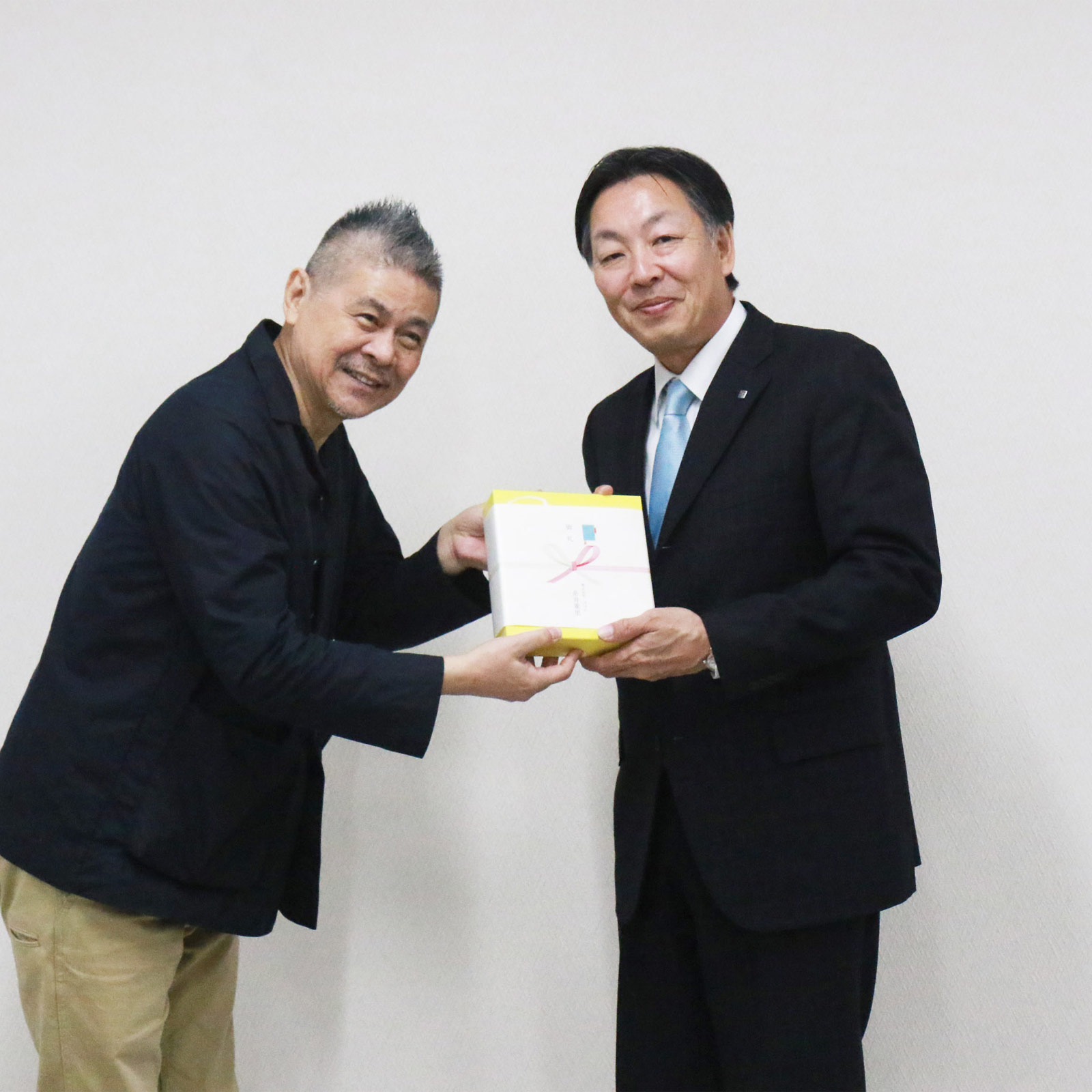
Thank you everyone! We look forward to working with you more.
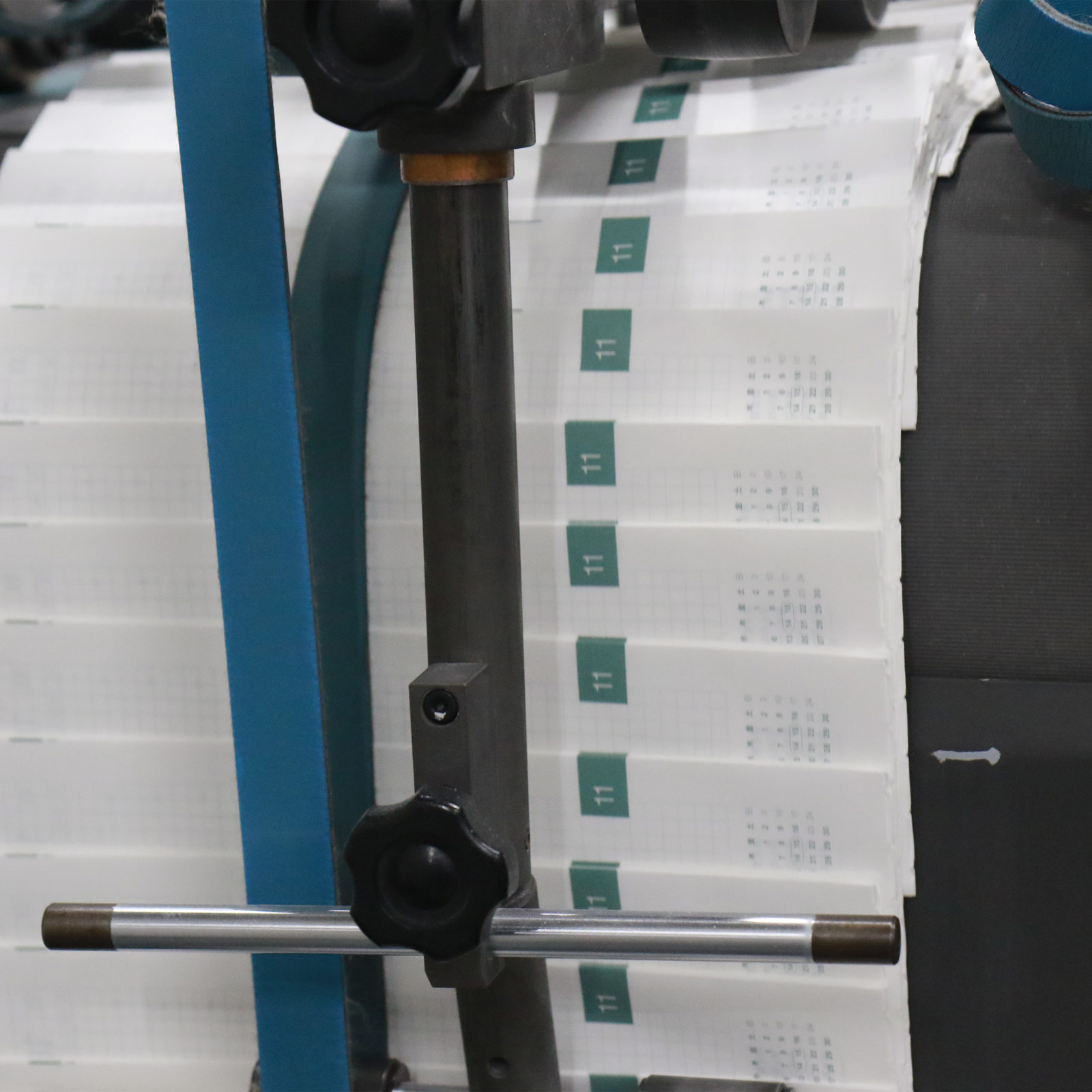
We visited the factory in Nara, where we’ve had our A6 Original and A5 Cousin books bound since 2005.
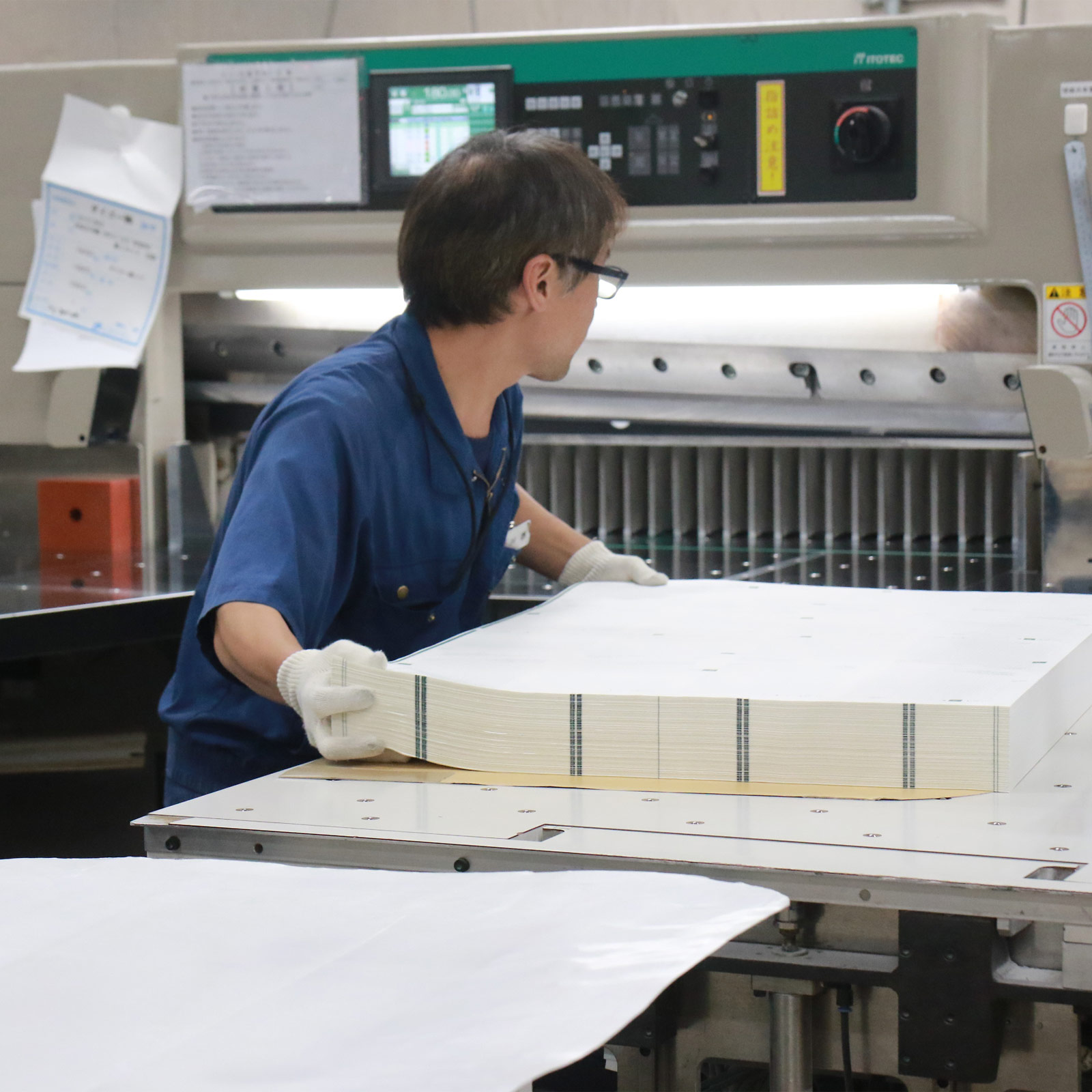
First the team showed us the cutting process. The thin, soft paper of the Hobonichi Techo apparently makes it difficult to line everything up perfectly while cutting.
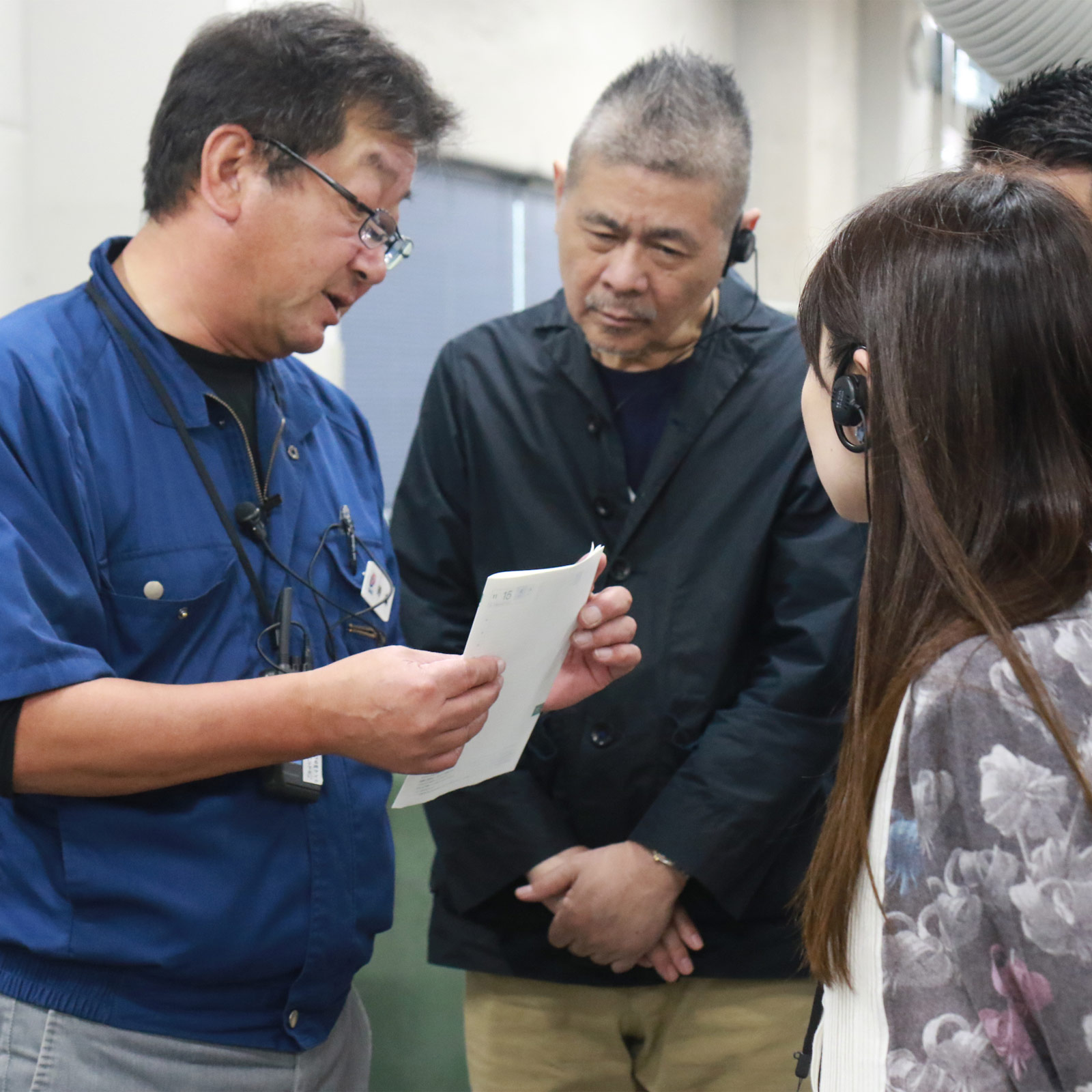
Plant manager shows us Hobonichi Techo Cousin pages that have gone through the cutting and folding process.
Plant Manager: If the graph paper design doesn’t line up perfectly from one page to the next it’s very noticeable, so we don’t line things up working from the edge of the paper itself. We cut and fold based on the placement of the print on the page.
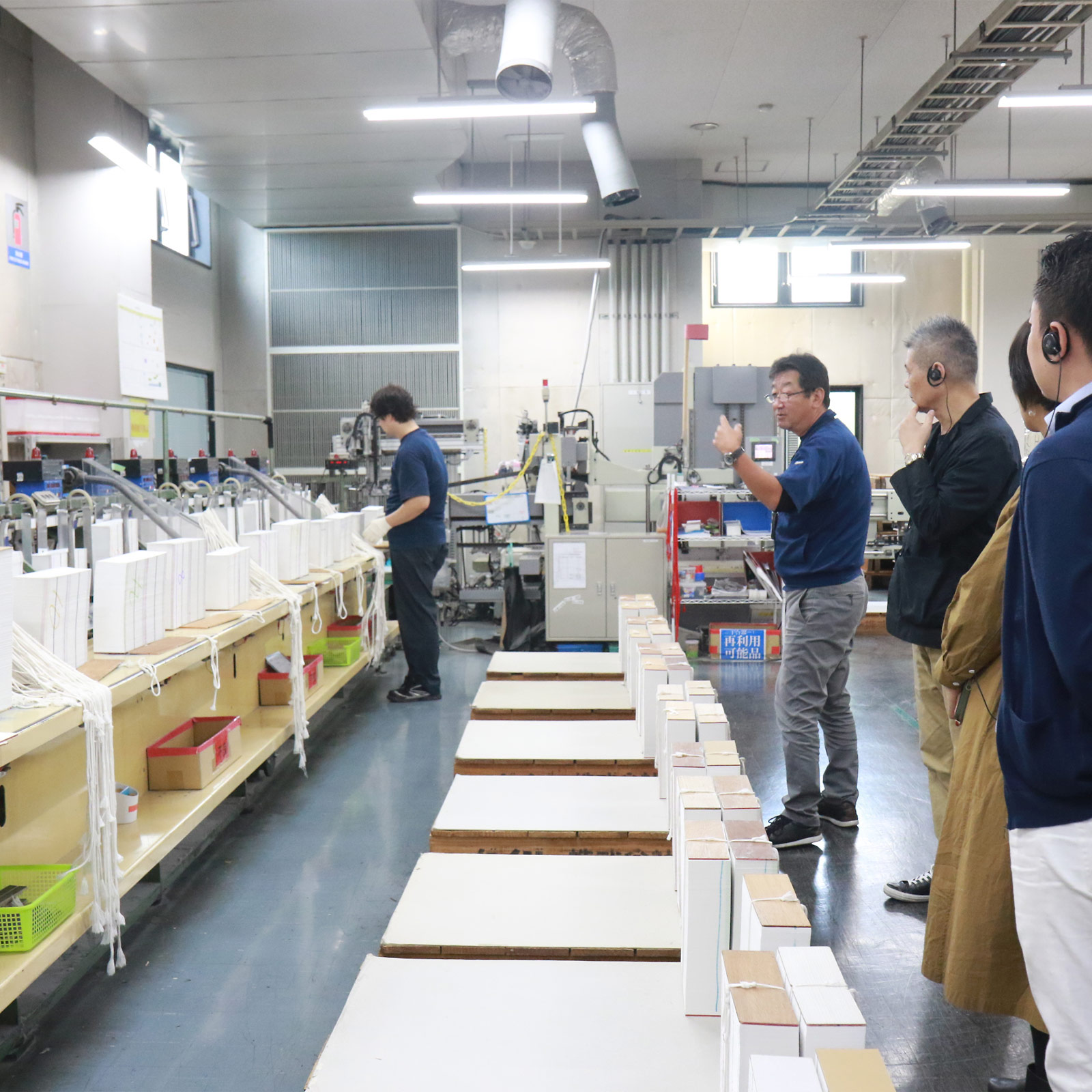
The process of binding together booklets, each of which consists of 16 pages. This factory now manufactures techos full time, but before switching to Hobonichi Techo bookbinding in 2005, their machines were limited to binding together up to 24 of these booklets, which would make a book 384 pages long.
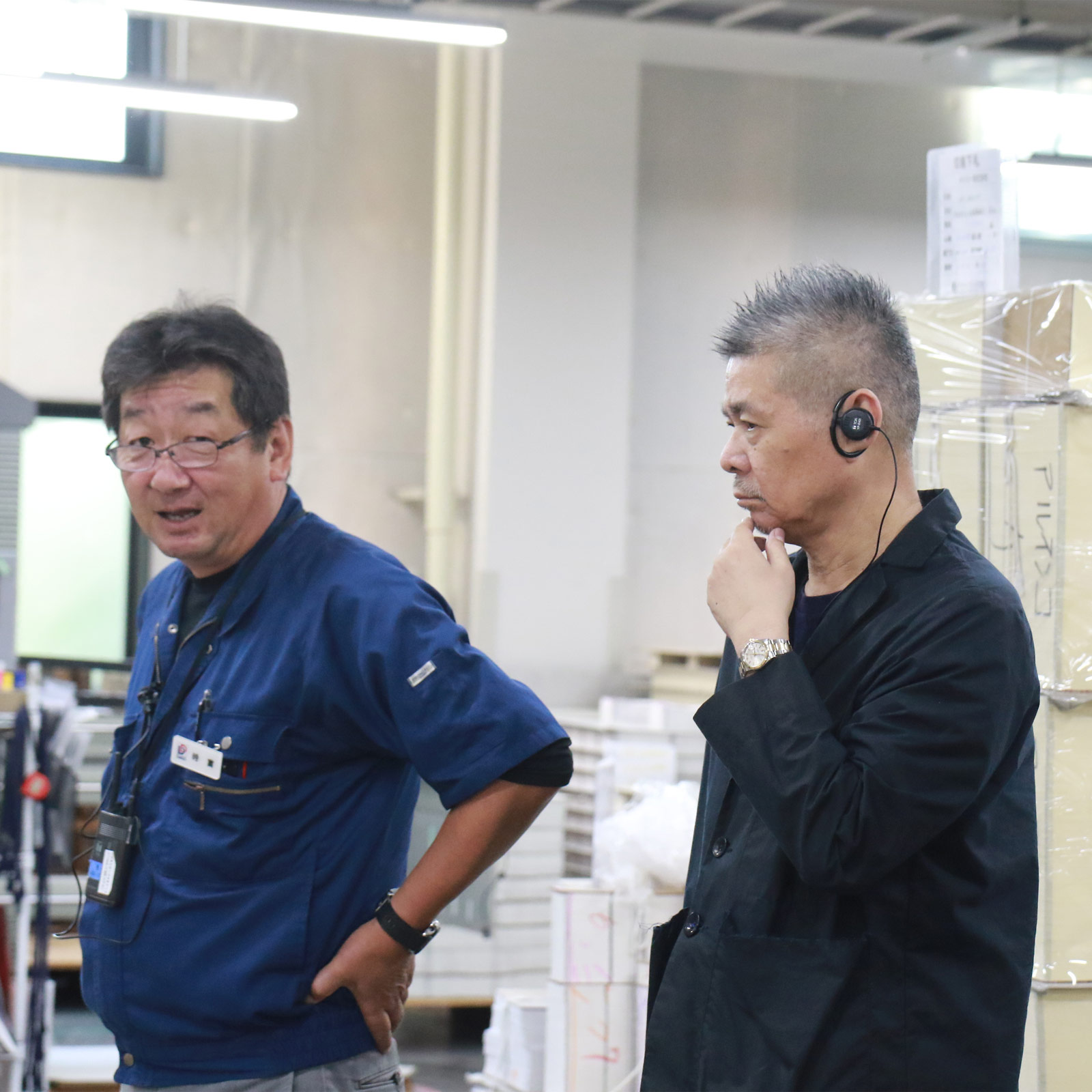
In order to bind the Hobonichi Techo, a daily planner, they needed to bind up to 28 booklets, or 448 pages.
Plant Manager: At first we were just attaching the final 4 booklets by hand, but that was extremely inefficient and less precise than the machines. So we made improvements to our machines that allowed them to handle up to 28 booklets. We were dumbstruck when the techo went up to needing 29 a few years later. (Laughs)
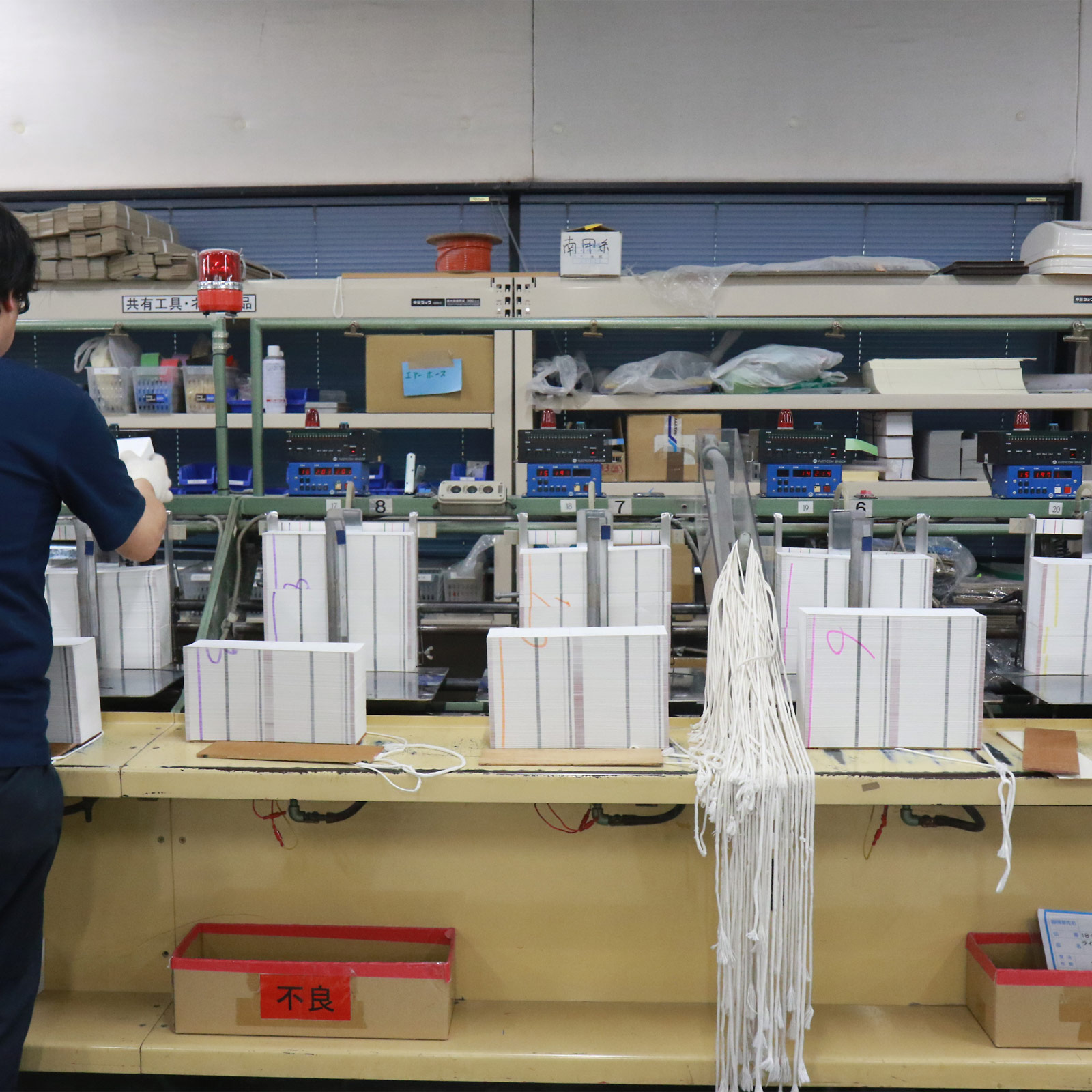
Without protest, the company had gone through the trouble of updating their machinery all over again to increase the capacity to 29 booklets for the sake of the Hobonichi Techo. Because the Cousin has a unique weekly section, it has more pages than the other techos. But the company does an amazing job of handling it.
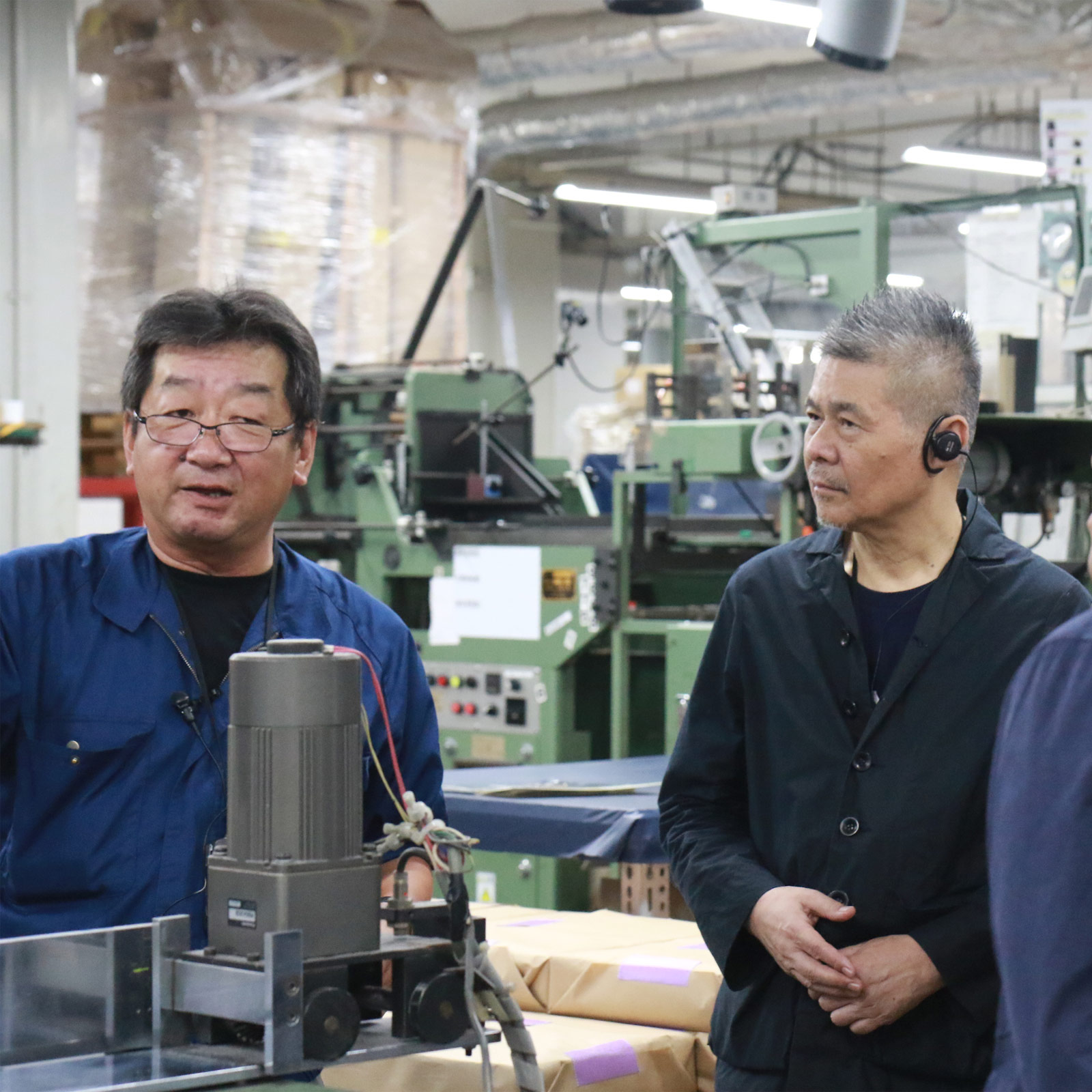
Itoi: I can see all the hard work that went into updating these machines, all the ideas that circulated among you and all the parts that were combined. It’s really interesting, and I’m so thankful for it.
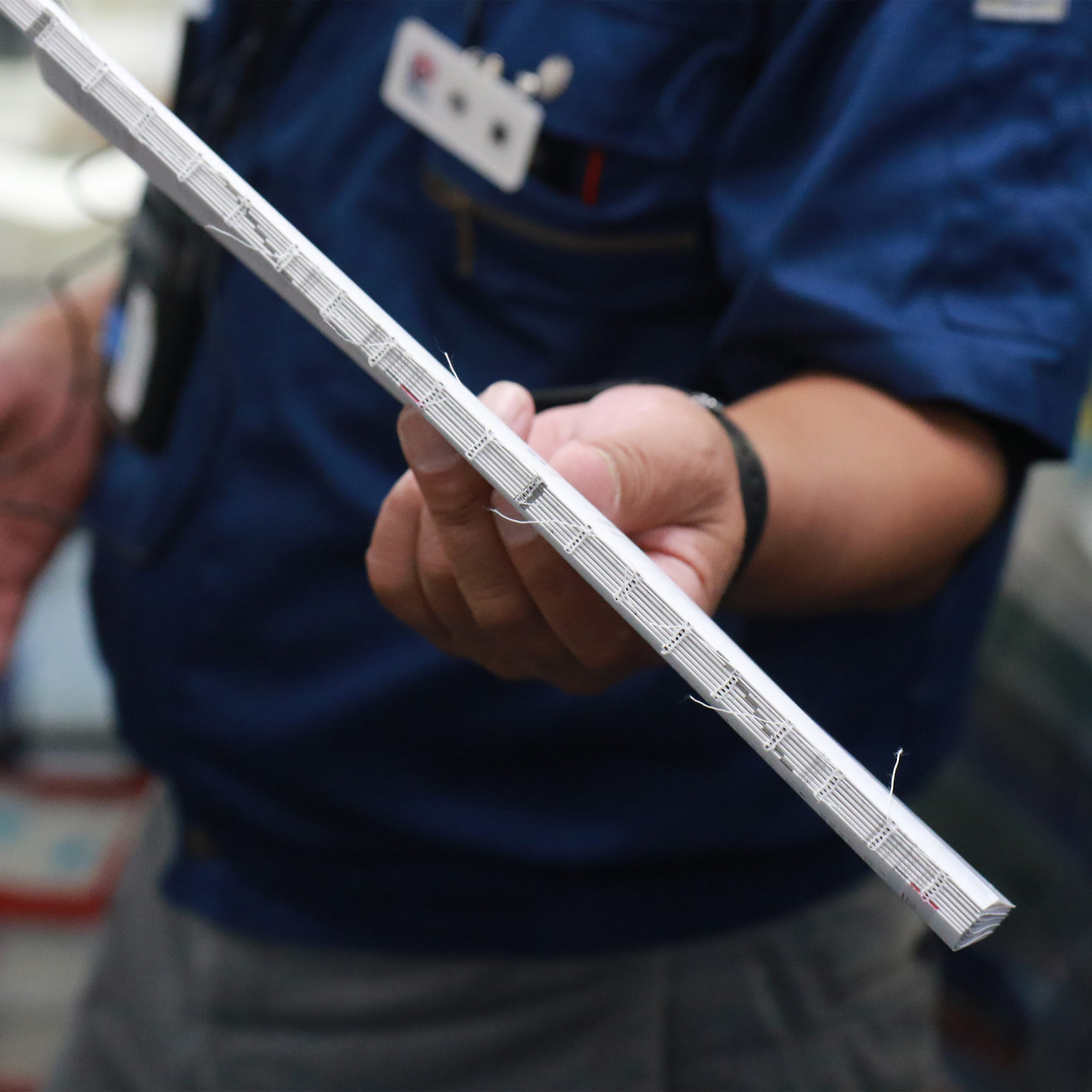
This is the source of the Hobonichi Techo’s binding strength. The thread-stitch binding is applied independently to each individual booklet.
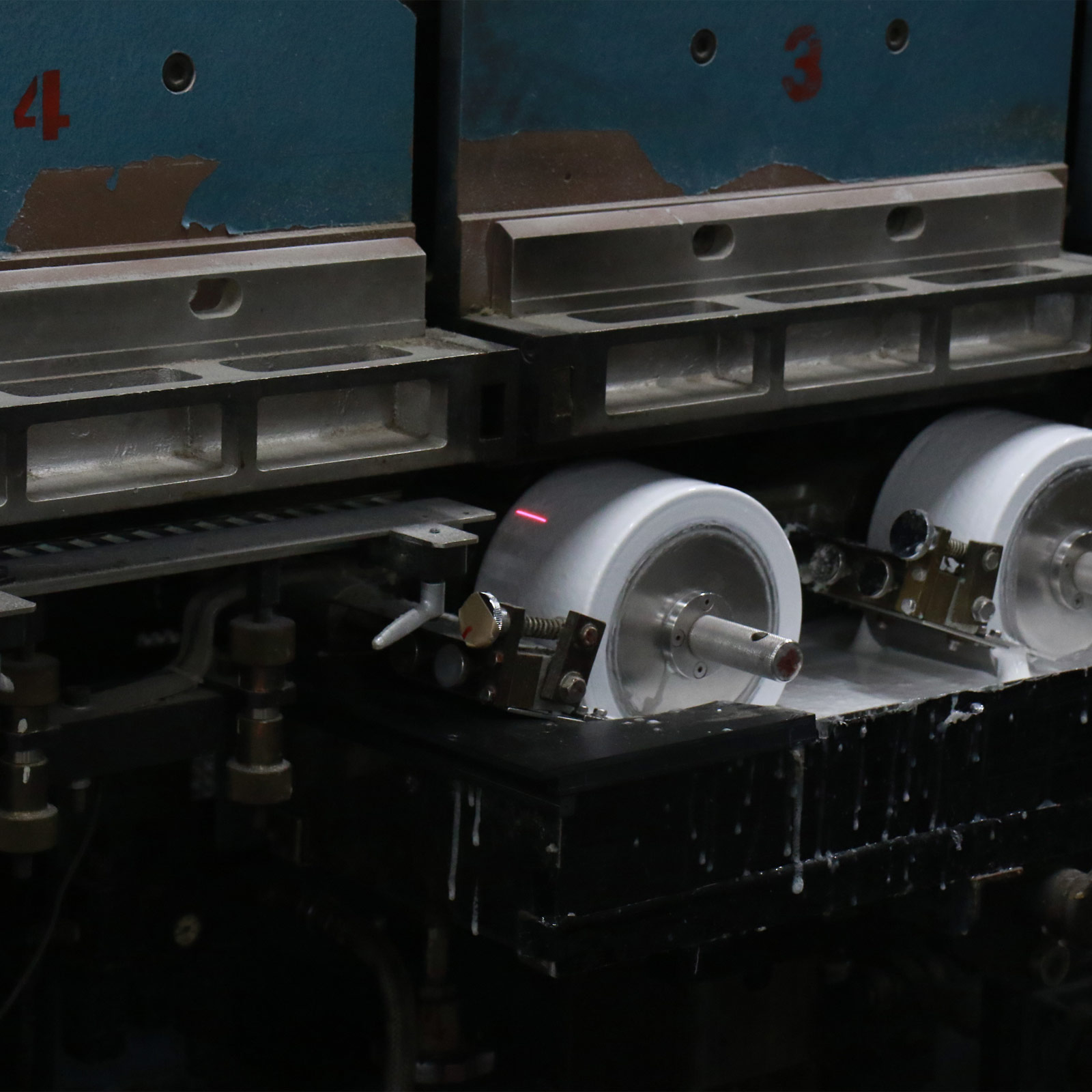
In order to keep the spine bound together despite the large number of pages, a special type of adhesive is used that takes time to dry. Over the first few years of the Hobonichi Techo, we noticed customer complaints about the spines cracking. After a lot of trial and error, they were able to establish a unique, durable adhesive application method exclusive to the Hobonichi Techo.
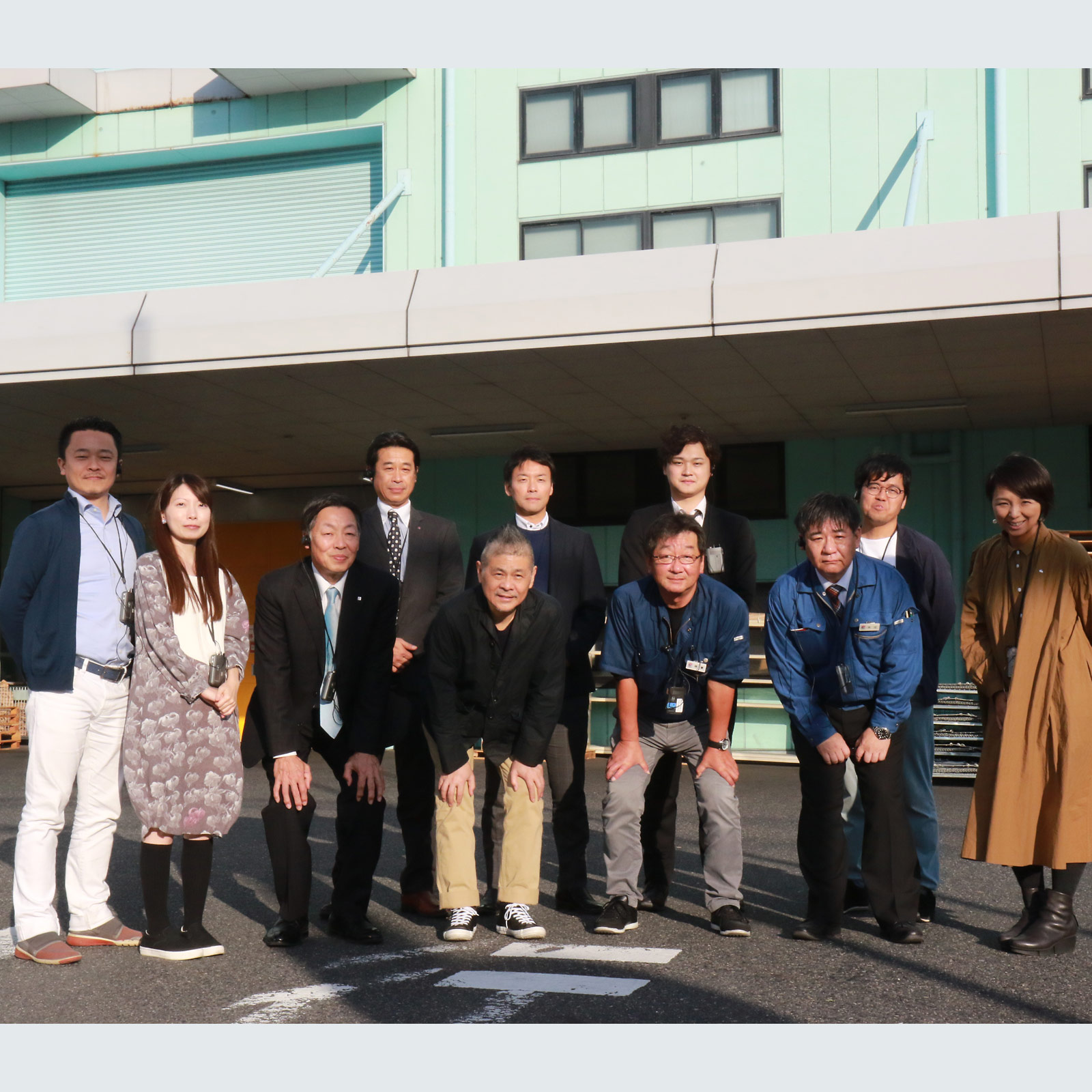
Joining us on today’s trip was Wakata, one of our customer service representatives.
Wakata: I was impressed to see all the special methods and improvements that go into making the final product. Being able to join the tour today gave me a perspective that will help us better serve our customers.
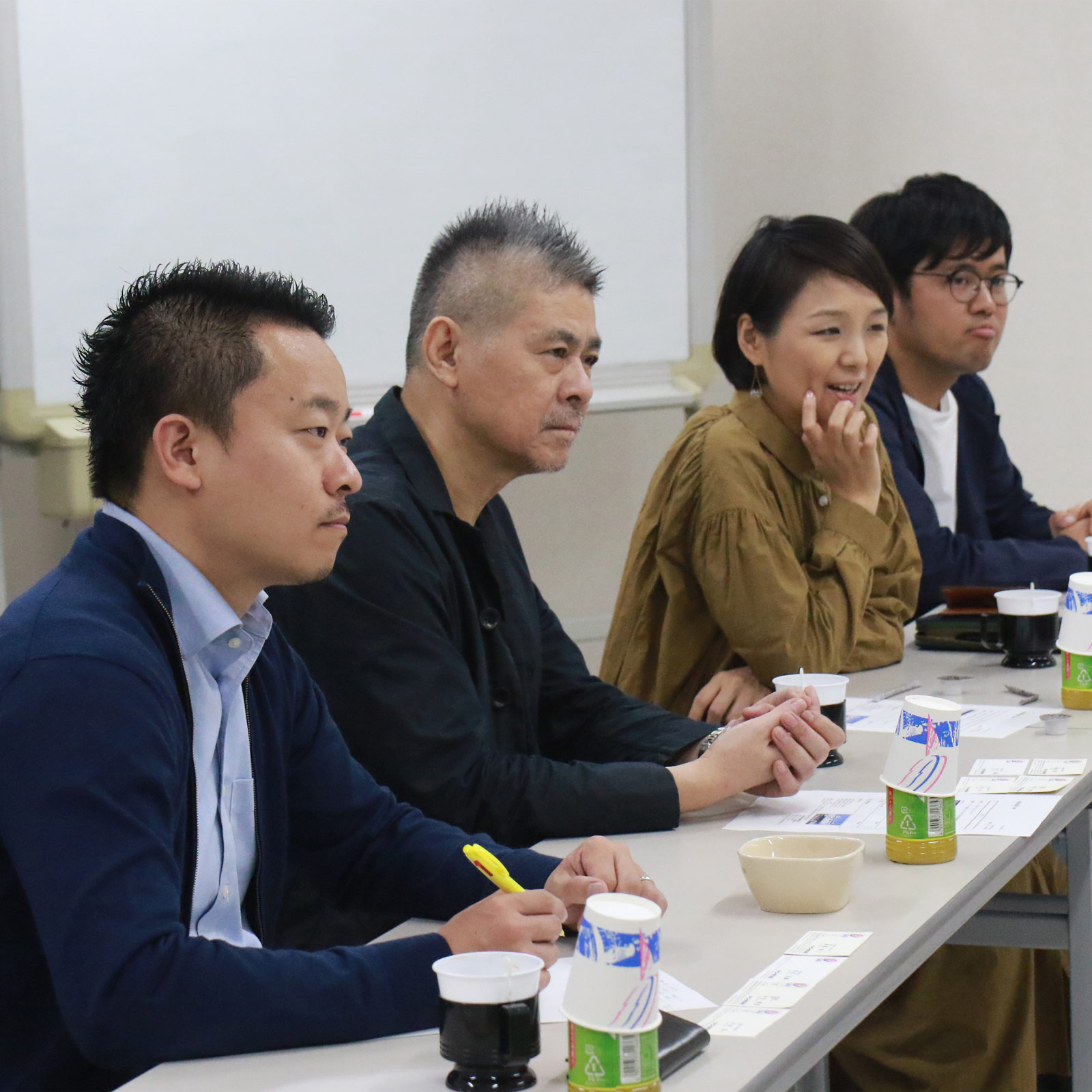
Itoi: We make it a point to be honest with our customers. Nothing good comes from glossing over things, so it was great to see the process evolve as you made improvements, like in the gluing process, when there were complaints from customers.
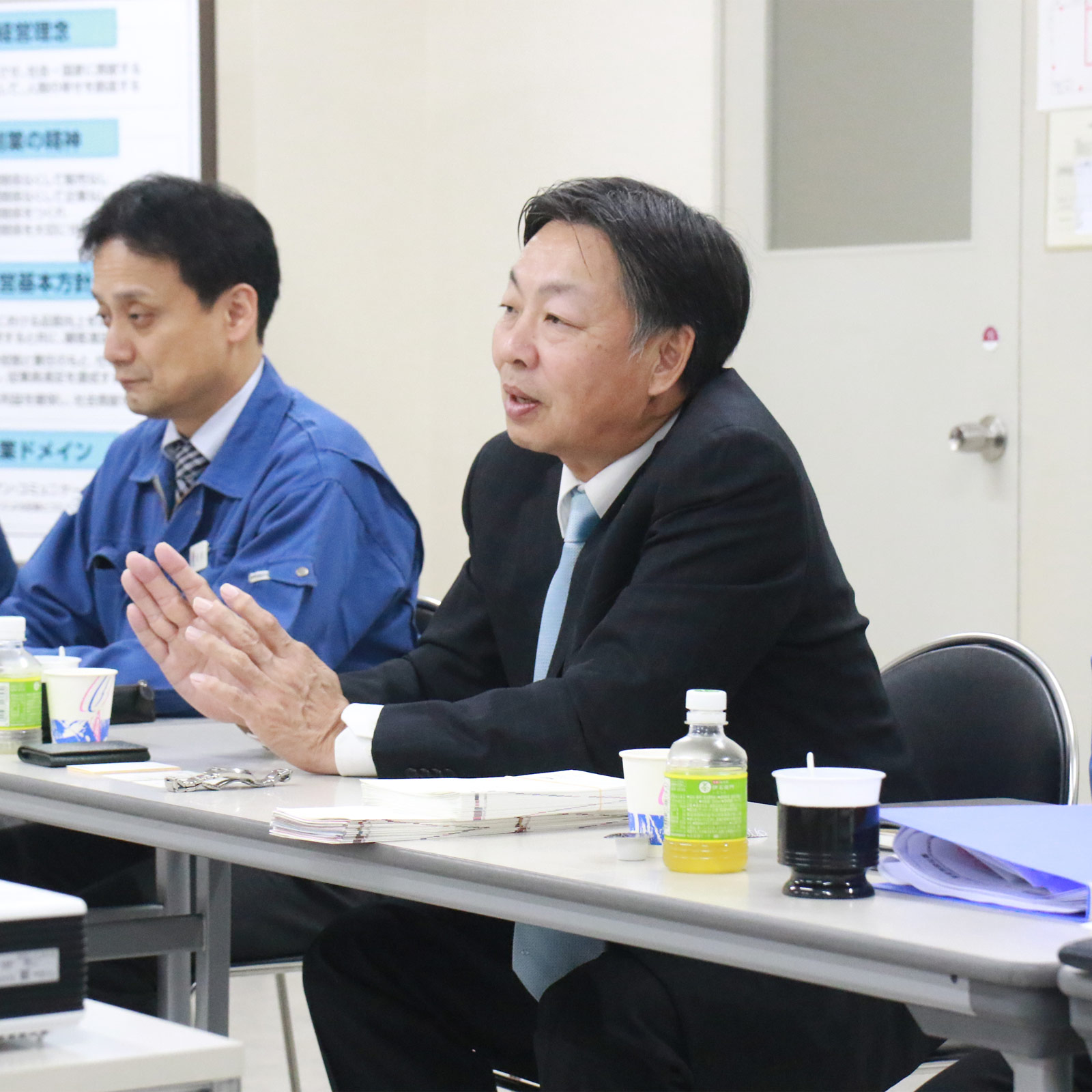
President (right): The techo gets opened and closed every day for a whole year. Every page gets written on. And after that, it sits on a shelf for years and years. For something this precious, which holds the record of a person’s life — we knew we had to work hard to create something strong enough to withstand all that.
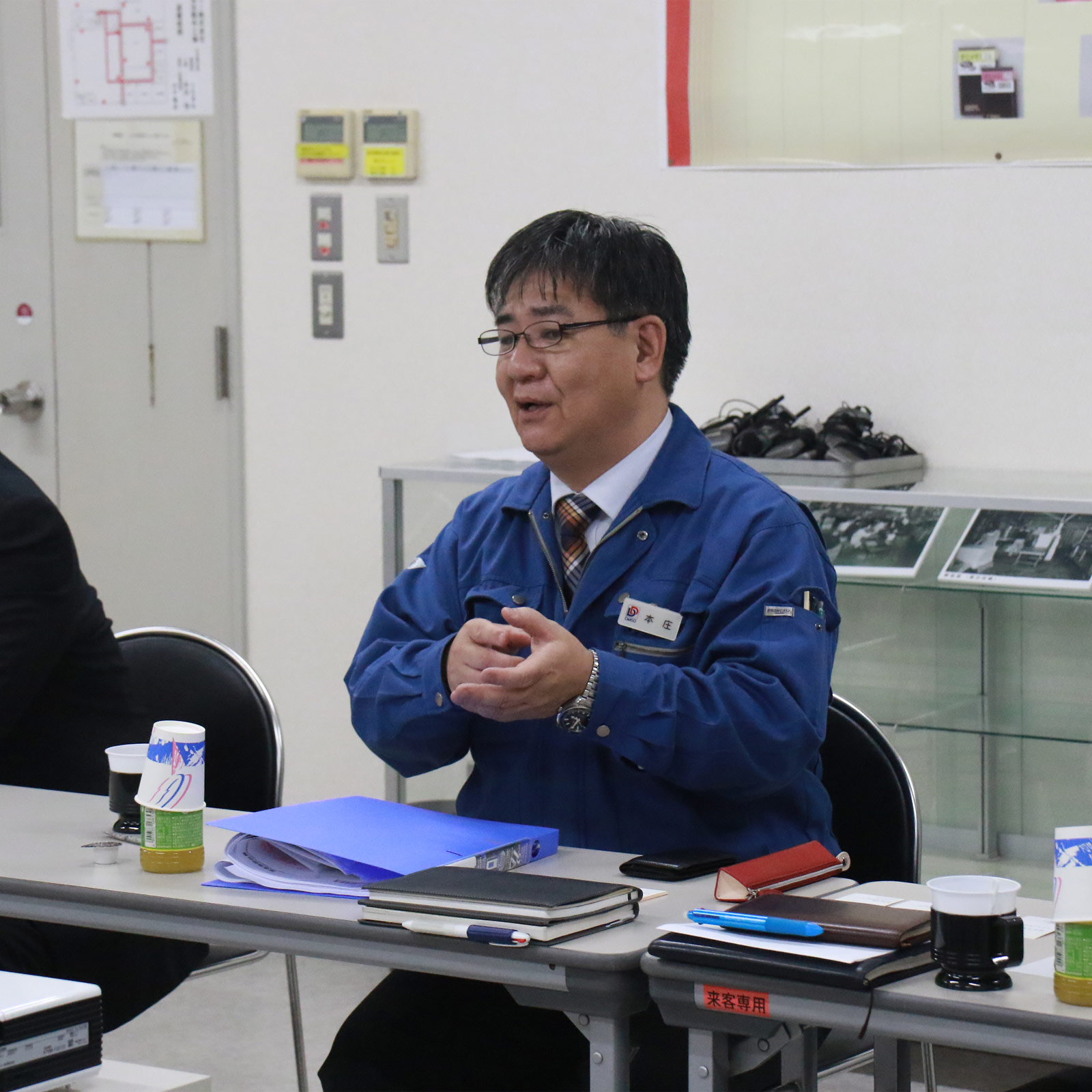
The head of quality control: We experienced culture shock with the daily page layout at first. We were making something we’d never made before, so we faced issues we’d never faced before. More than that, we only had one chance a year to learn by trial and error. The opportunity to manufacture the Hobonichi Techos has undoubtedly been the reason we’ve been able to improve our technological capabilities.
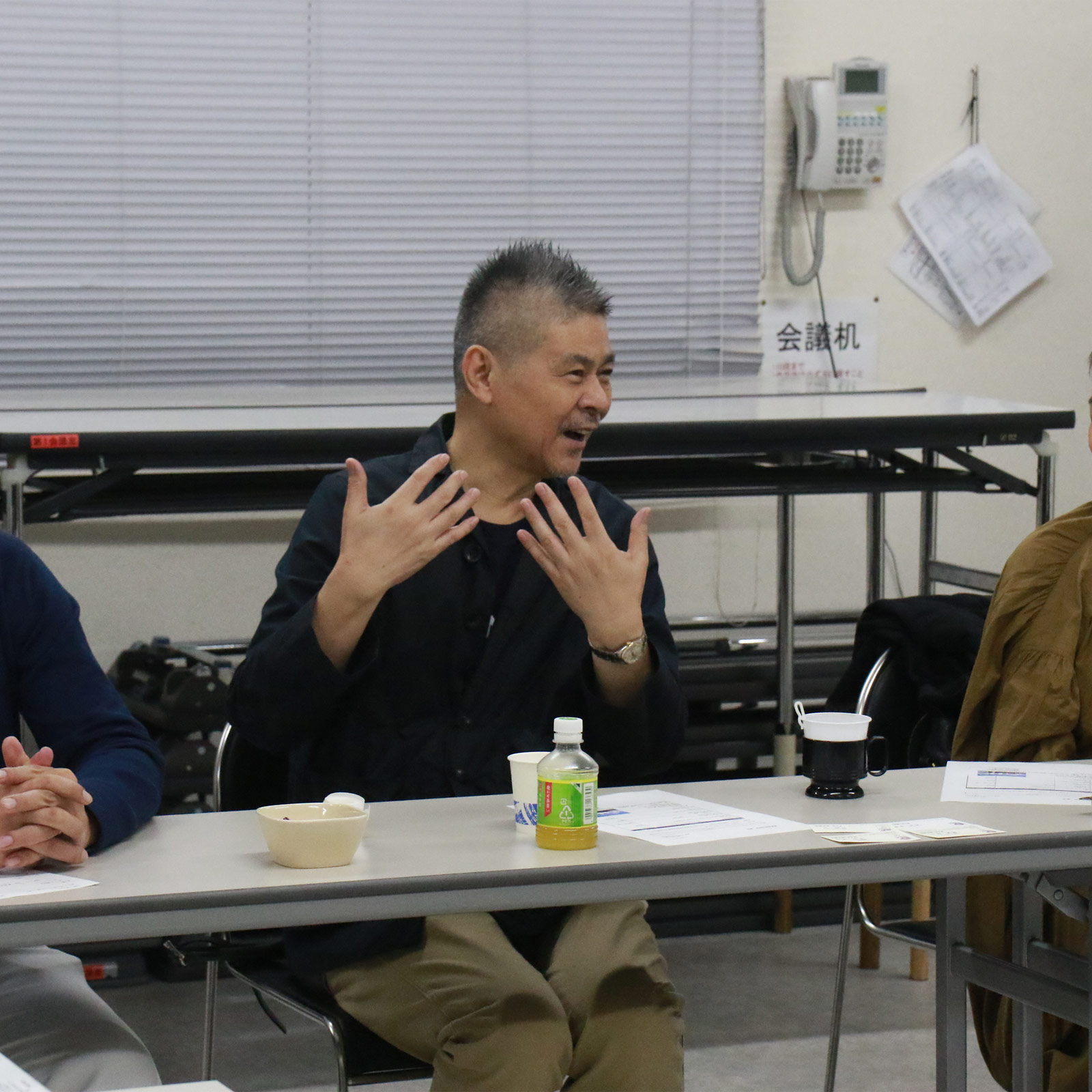
Itoi: People often ask what we’d do if someone copied our product, but I honestly don’t think anyone would be able to do it. For one thing, the soul of the product would be entirely different. All of us who work on the Hobonichi Techo share the will to improve it as we go. Those years of improvements are woven into what’s now the techo. It’s not something that can come from simply wanting to profit.

Thank you everyone! We look forward to working with you more.

We visited the factory in Nara, where we’ve had our A6 Original and A5 Cousin books bound since 2005.

First the team showed us the cutting process. The thin, soft paper of the Hobonichi Techo apparently makes it difficult to line everything up perfectly while cutting.

Plant manager shows us Hobonichi Techo Cousin pages that have gone through the cutting and folding process.
Plant Manager: If the graph paper design doesn’t line up perfectly from one page to the next it’s very noticeable, so we don’t line things up working from the edge of the paper itself. We cut and fold based on the placement of the print on the page.

The process of binding together booklets, each of which consists of 16 pages. This factory now manufactures techos full time, but before switching to Hobonichi Techo bookbinding in 2005, their machines were limited to binding together up to 24 of these booklets, which would make a book 384 pages long.

In order to bind the Hobonichi Techo, a daily planner, they needed to bind up to 28 booklets, or 448 pages.
Plant Manager: At first we were just attaching the final 4 booklets by hand, but that was extremely inefficient and less precise than the machines. So we made improvements to our machines that allowed them to handle up to 28 booklets. We were dumbstruck when the techo went up to needing 29 a few years later. (Laughs)

Without protest, the company had gone through the trouble of updating their machinery all over again to increase the capacity to 29 booklets for the sake of the Hobonichi Techo. Because the Cousin has a unique weekly section, it has more pages than the other techos. But the company does an amazing job of handling it.

Itoi: I can see all the hard work that went into updating these machines, all the ideas that circulated among you and all the parts that were combined. It’s really interesting, and I’m so thankful for it.

This is the source of the Hobonichi Techo’s binding strength. The thread-stitch binding is applied independently to each individual booklet.

In order to keep the spine bound together despite the large number of pages, a special type of adhesive is used that takes time to dry. Over the first few years of the Hobonichi Techo, we noticed customer complaints about the spines cracking. After a lot of trial and error, they were able to establish a unique, durable adhesive application method exclusive to the Hobonichi Techo.

Joining us on today’s trip was Wakata, one of our customer service representatives.
Wakata: I was impressed to see all the special methods and improvements that go into making the final product. Being able to join the tour today gave me a perspective that will help us better serve our customers.

Itoi: We make it a point to be honest with our customers. Nothing good comes from glossing over things, so it was great to see the process evolve as you made improvements, like in the gluing process, when there were complaints from customers.

President (right): The techo gets opened and closed every day for a whole year. Every page gets written on. And after that, it sits on a shelf for years and years. For something this precious, which holds the record of a person’s life — we knew we had to work hard to create something strong enough to withstand all that.

The head of quality control: We experienced culture shock with the daily page layout at first. We were making something we’d never made before, so we faced issues we’d never faced before. More than that, we only had one chance a year to learn by trial and error. The opportunity to manufacture the Hobonichi Techos has undoubtedly been the reason we’ve been able to improve our technological capabilities.

Itoi: People often ask what we’d do if someone copied our product, but I honestly don’t think anyone would be able to do it. For one thing, the soul of the product would be entirely different. All of us who work on the Hobonichi Techo share the will to improve it as we go. Those years of improvements are woven into what’s now the techo. It’s not something that can come from simply wanting to profit.

Thank you everyone! We look forward to working with you more.
Our will to constantly improve the techo has come to define it.
Toppan Printing Manufacturing Partner
A bookbinding company with a history of over 70 years that now focuses exclusively on techos.
